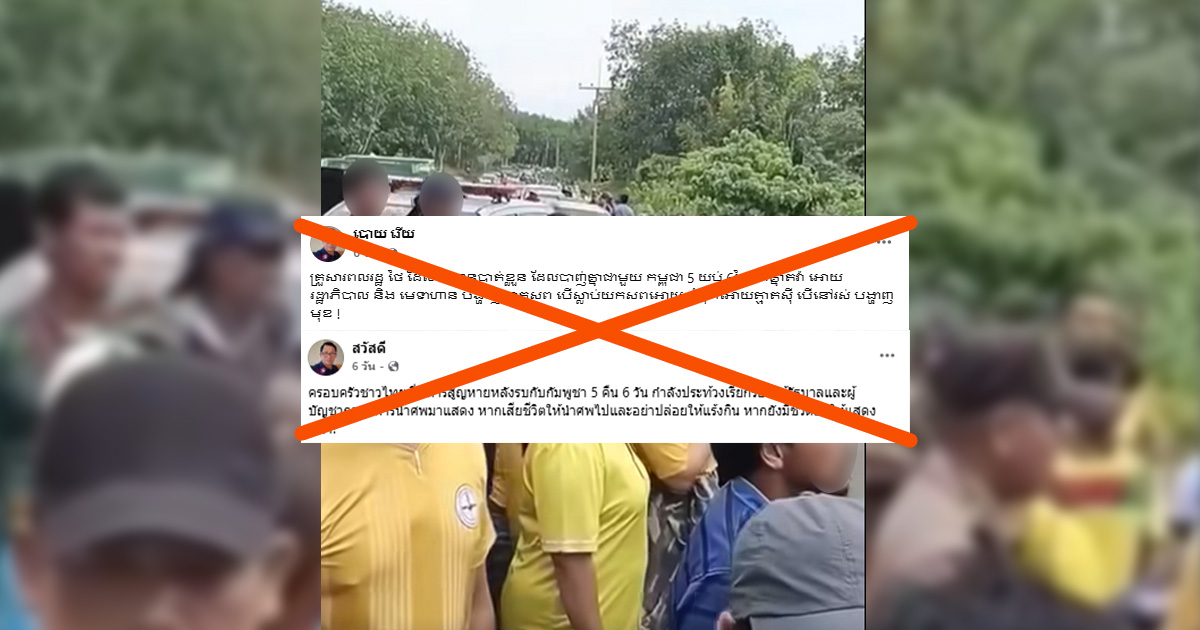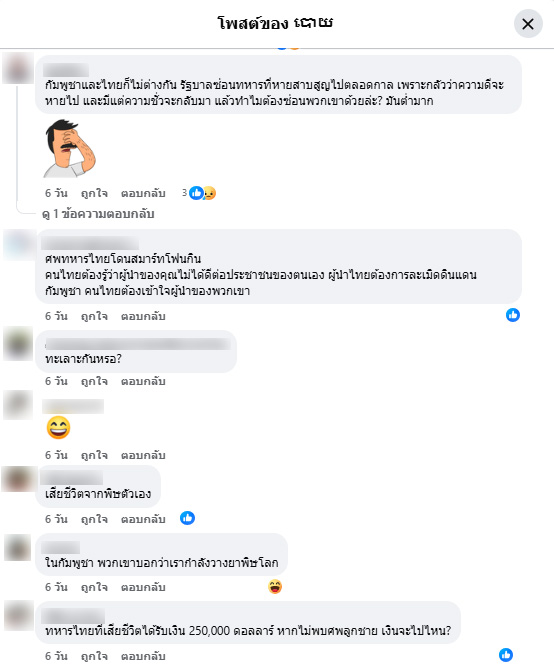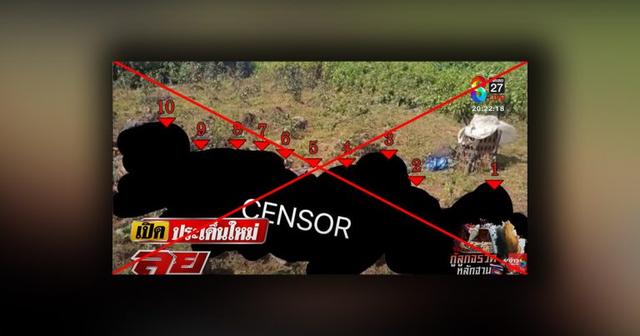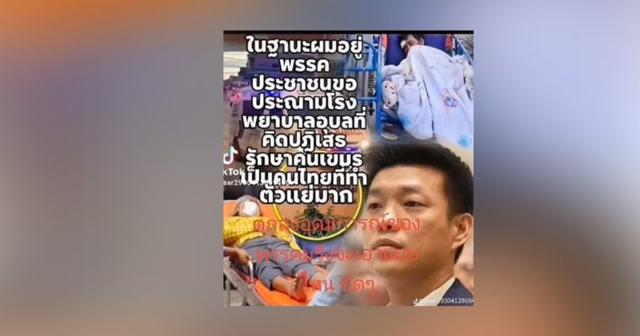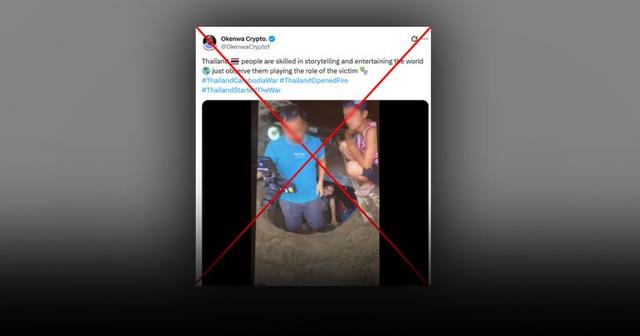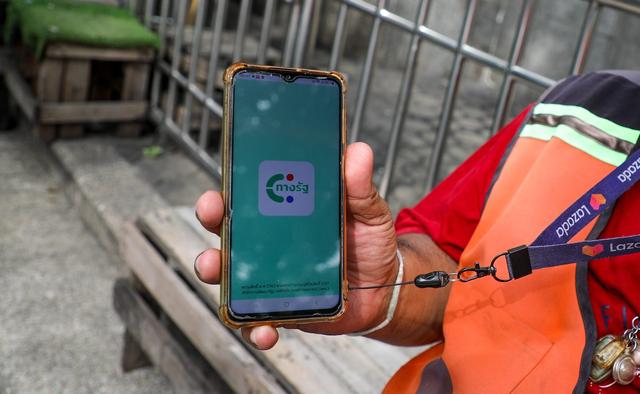Upon investigation, Thai PBS confirmed that this is “fake news” with characteristics of “distortion,” using footage from a land rights protest in Krung Yan Subdistrict, Thung Yai District, Nakhon Si Thammarat, combined with false text to mislead the public.
Thai PBS Verify found the source of the fake news from: Facebook
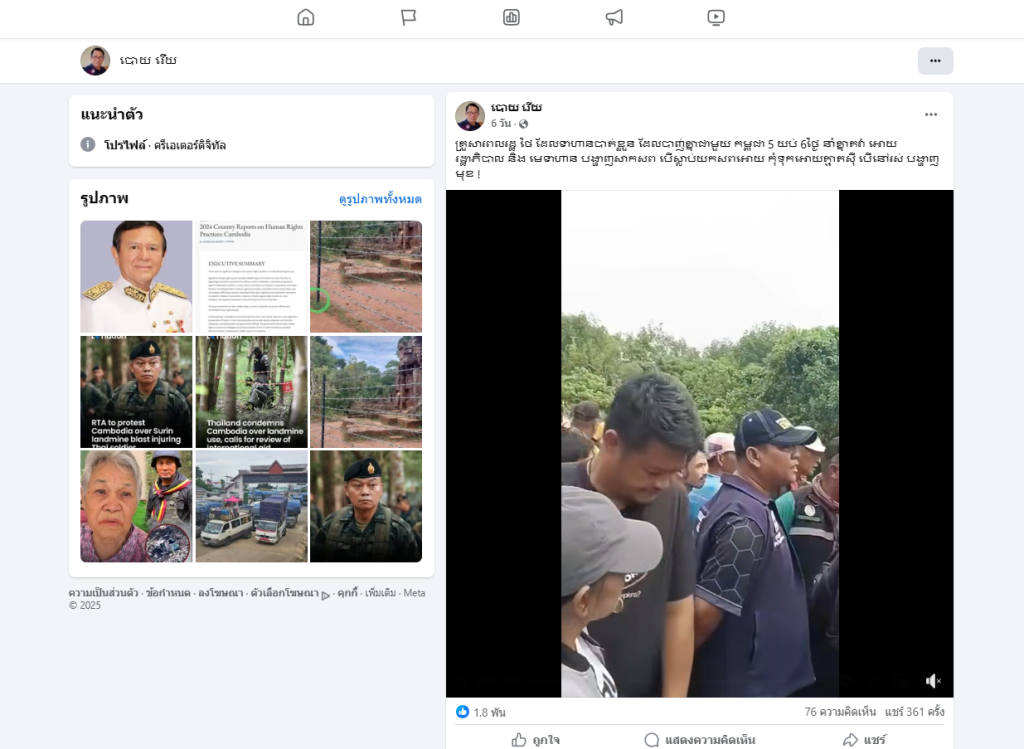
A screenshot shows a fake post from a Cambodian user claiming that families of Thai soldiers were protesting to bring back bodies.
Thai PBS Verify checked the Facebook page named “បោយ រើយ,” which belongs to a Cambodian user with around 13,000 followers. Most of the content focuses on Cambodian military news and Thai-Cambodian conflicts. The page posted (1) a video of a large protest along with a caption stating that.. “គ្រួសារពលរដ្ឋ ថៃ ដែលទាហានបាត់ខ្លួន ដែលបាញ់គ្នាជាមួយ កម្ពុជា 5 យប់ 6ថ្ងៃ នាំគ្នាតវ៉ា អោយរដ្ឋាភិបាល និង មេទាហាន បង្ហាញសាកសព បើស្លាប់យកសពអោយ កុំទុកអោយត្មាតស៊ី បើនៅរស់ បង្ហាញមុខ !” According to Google Translate, the caption reads:
Example of the clip claimed to show families of Thai soldiers protesting for the return of bodies
However, our review found that people in the video were speaking in the Southern Thai dialect. We then used Google Lens to check still images from the clip and found a report from the Nakhon Si Thammarat Journalists Association Facebook page showing a land dispute protest at a rubber plantation in Krung Yan Subdistrict, Thung Yai District, Nakhon Si Thammarat. The physical surroundings in the photos closely match those seen in the clip.
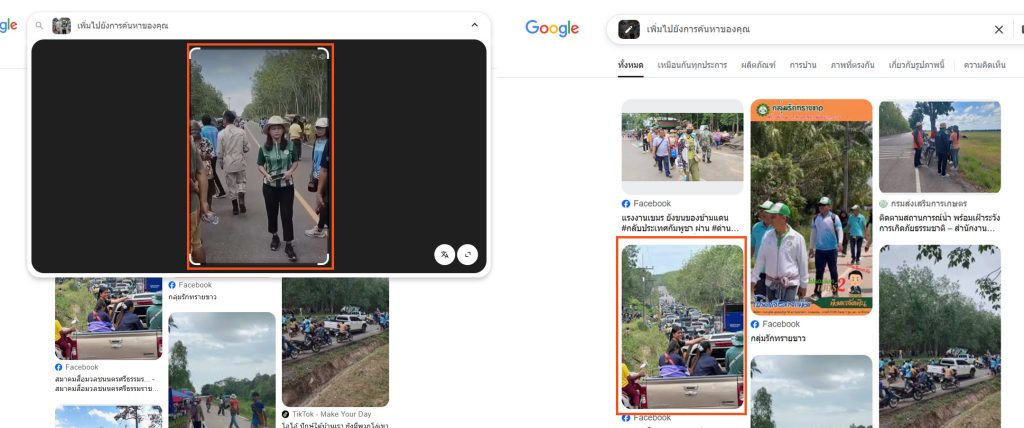
A screenshot shows the results from a Google Lens search, revealing that the image from the fake clip (left) closely matches the environment seen in news reports of a land dispute protest in Nakhon Si Thammarat province (right).
We then conducted a reverse image search using keyframes from the video with the digital verification tool InVid-WeVerify (2). The results showed that a man appearing in the clip matched an image from a post (3) by the Nakhon Si Thammarat Journalists Association Facebook page, published on August 4, 2025.
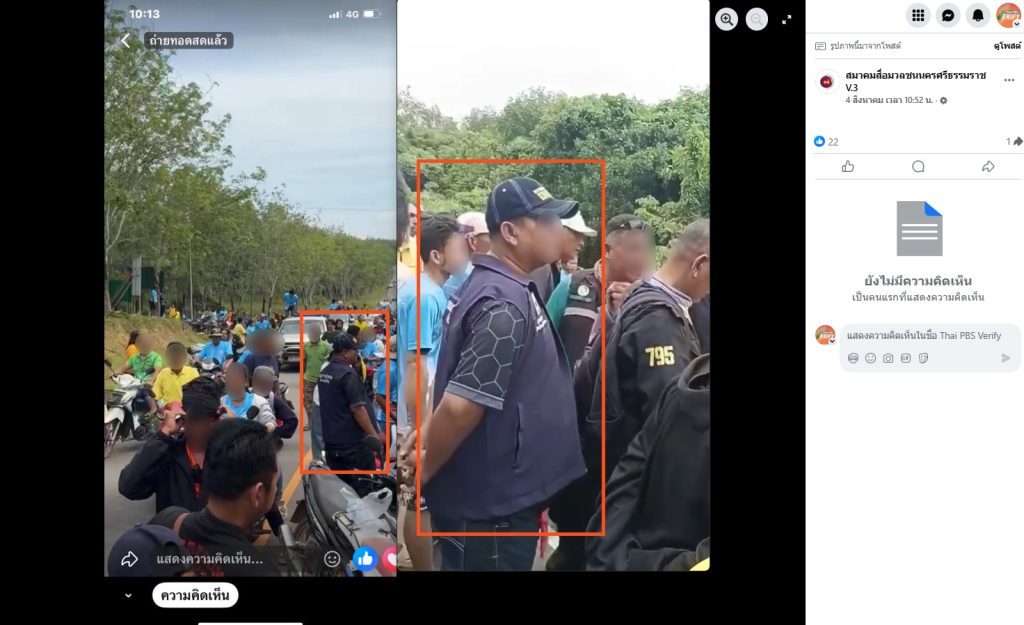
A screenshot shows the land dispute protest at a rubber plantation (left) compared with the image from the fake clip (right).
As for the incident in the clip, verification found that Thai PBS had reported (5) on the protest over land rights at the Rubber Authority of Thailand office in Krung Yan Subdistrict, Thung Yai District, Nakhon Si Thammarat, on August 4, 2025. That protest led to clashes, leaving 14 people injured, but it had nothing to do with the Thai-Cambodian conflict.
It is difficult for the Cambodian public to access the actual facts.
Assoc. Prof. Pijitra Supasawatkul, researcher at the Institute of Asian Studies, Chulalongkorn University, stated that such actions reflect an intention to create false information, particularly to highlight alleged losses on the Thai side. This is because, in Cambodia, there are currently many cases of fallen soldiers whose bodies have not yet been returned to their families. Therefore, this act aims to discredit Thailand, making Cambodian citizens feel that Thailand has also suffered losses or is irresponsible in handling the deaths of its soldiers.

Assoc. Prof. Pijitra Supasawatkul, researcher at the Institute of Asian Studies, Chulalongkorn University
further explained that in the current conflict, Cambodia’s main objective is likely not to claim border territory, but rather to fuel domestic nationalism. Cambodian politics is under pressure, particularly from accusations by major powers that the country is a hub for scams, as well as from a struggling economy. Nationalism thus becomes a key tool to regain political support.
Presenting news in this manner can be seen as psychological warfare. For Cambodia, such tactics can still work effectively on its citizens because communication channels remain limited, reliable news verification systems are lacking, and mainstream media is controlled by the government. This makes it difficult for the Cambodian public to access trustworthy information, while most people also have little time to follow the news or fact-check.
